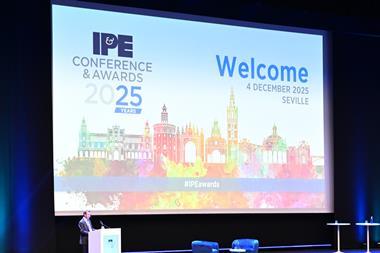GLOBAL – Metals and mining companies taking action to manage water strategically are better financial performers, according to investor analysis from CDP and Eurizon Capital.
The report, called ‘Metals & Mining: a sector under water pressure, analysis for institutional investors of critical issues facing the industry’, calls for a reassessment of current valuation models for companies in the industry.
It details the material risks posed to the sector by water and shows how poor water stewardship can lead to increased capital expenditure and operating costs, lower revenues, decreased shareholder value and disruption or ultimately an end to business operations.
Gianluca Manca, head of sustainability at Eurizon Capital, said: “Smart investors and companies know how damaging inaction can be. It is critical for metals and mining companies to integrate water in their current and future business strategies to develop more resilient business models that offer long-lasting investment cases.”
As much as 40% of a metals and mining company’s value is based on its ability to exploit commodity reserves.
However, insufficient volume or quality of water will hinder access to those reserves, significantly threatening business operations.
US company Newmont Mining, for example, had to spend $200m (€150.6m) on larger water reservoirs to re-secure its license to do business in Peru.
The publication, therefore, suggests traditional approaches to valuing metals and mining companies be revisited, to take account of the uncertainty surrounding a company’s ability to access adequate water.
The key findings of the report are:
All, bar one, of the 36 metals and mining companies that disclosed water data identify substantive water-related risks that could reduce profits. More than two-thirds (67%) identify water stress as a possible risk to operations, making it the most reported risk. It is also the most imminent risk, with 47% of companies expecting water stress to hit their business within five years. The majority (64%) of businesses have already been badly hit by water-related issues in the past five years, with flooding the most commonly cited occurrence. More than one-third (39%) are now experiencing increased costs as a result of negative water impacts. American aluminium producer Alcoa, for example, lost $130m, or 6.5% of EBITDA, in 2011 due to flooding damage.
For the report, 530 investors with $57trn in asset under management requested 57 of the largest metals and mining companies in the Global 500 and other water-stressed markets to disclose their water data through CDP.
The report is based on information provided by 36 businesses, representing $773bn in market capitalisation.
The companies that failed to meet this investor demand for water data account for $160bn of market capitalisation.
James Hulse, head of CDP’s investor initiatives, said: “With investors’ attention sharply focused on water risks and seeking guidance for engagement, it is of great concern that nearly one-third of the metals and mining companies targeted failed to provide information, despite evidence suggesting sound management of water is linked to better financial performance.
“The valuation methodology for this sector must be revisited to factor in the impact of water scarcity.”
The number of investors requesting critical water data from the world’s largest companies through CDP’s water programme has nearly quadrupled in just three years.
Guidance for investors to engage with companies to improve their management of water risk is included in the report, which is available on CDP’s website.
The impact of water on all companies in the Global 500 will be revealed in the CDP Global 500 water report 2013, set to be released on 31 October.
















No comments yet